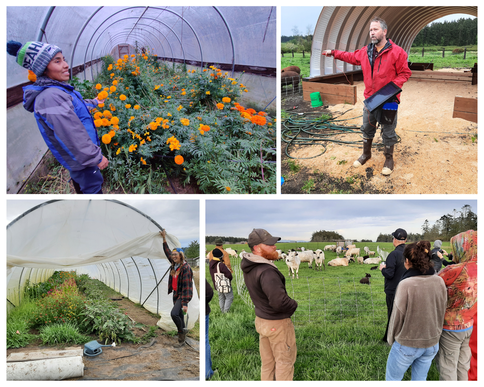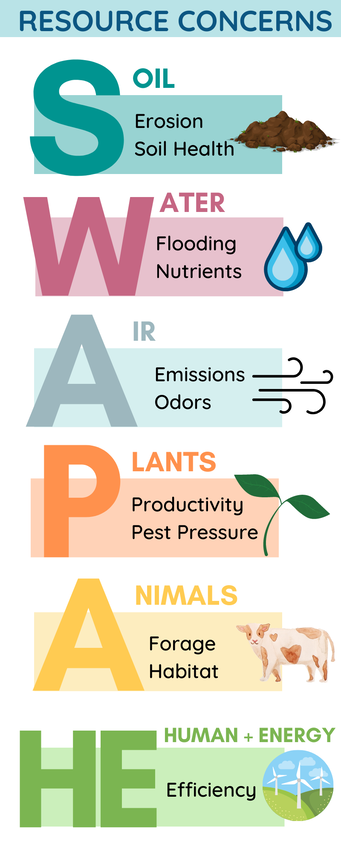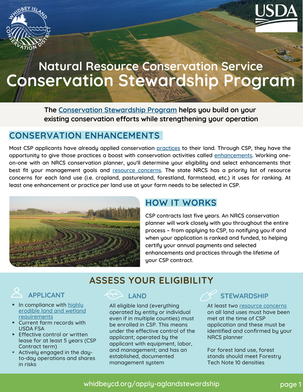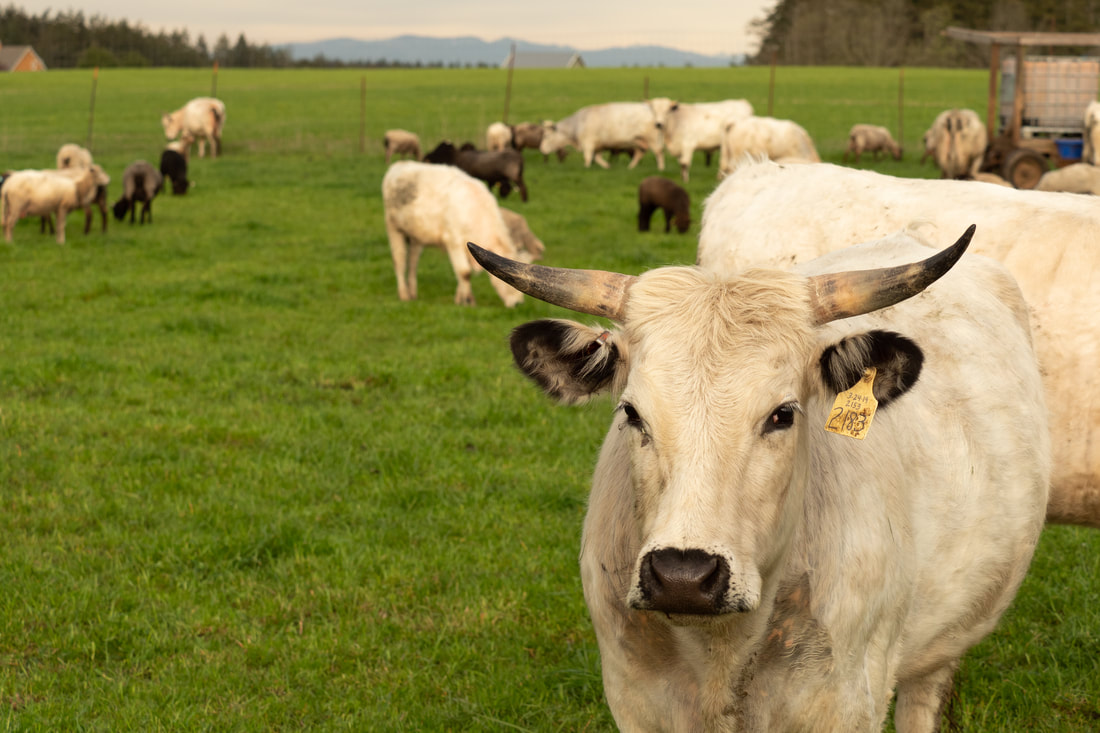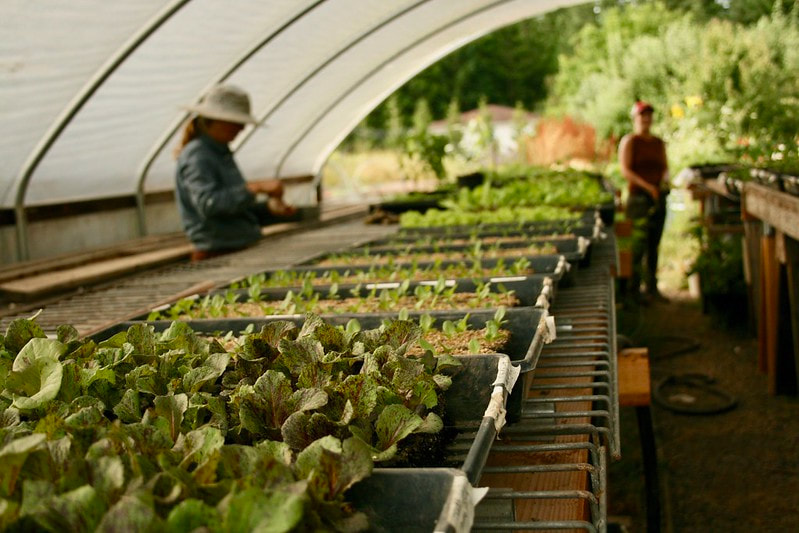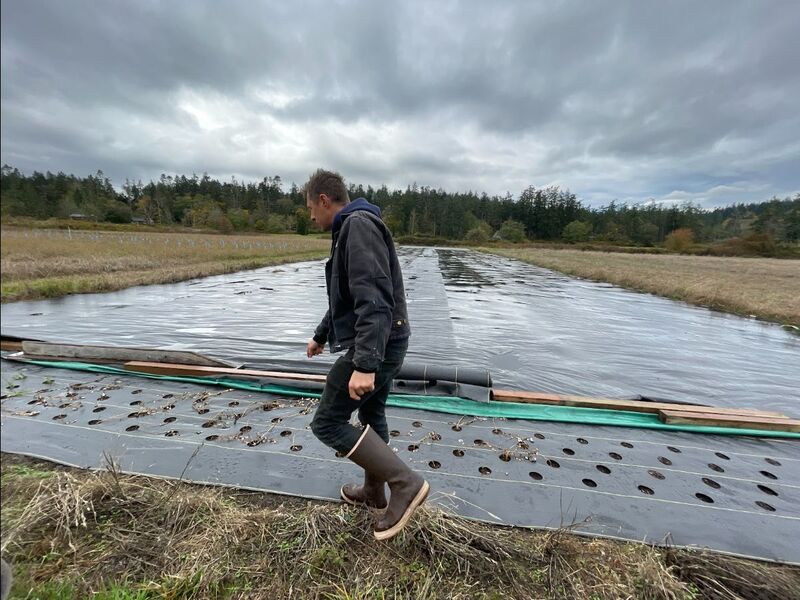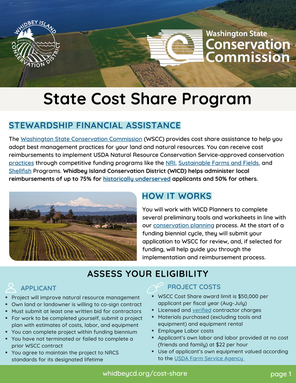Financial Assistance from USDA
|
We’re partnering with the USDA Natural Resources Conservation Service (NRCS) to streamline access to technical and financial support for Whidbey’s farmers. USDA's Census of Agriculture shows that Island County has one of the largest percentages of historically underserved producers when compared to surrounding counties - 91% small, 52% women owned, 31% beginning, 10% veteran, 8% young, and 6% BIPOC. USDA offers help unique to the concerns of historically underserved producers: beginning, socially disadvantaged, limited resource, and military veterans. In addition, women in agriculture are helping to pave the way for a better future. Use this self-determination tool to see if you’re a limited resource producer. These producers are eligible for higher rates of financial assistance. We'll help you navigate the process. |
Natural Resource ConservationNRCS provides agricultural producers and non-industrial forest managers with financial resources and one-on-one help to plan and implement improvements, or what NRCS calls conservation practices. Using these practices can lead to cleaner water and air, healthier soil, and better wildlife habitat, all while improving agricultural operations. You can use the Conservation Concerns Tool to learn about different types of conservation issues that might impact the productivity or natural resources on your farm, ranch, or forest.
The NRCS calls these issues resource concerns and uses the categories soil, water, air, animals, plants, and energy/human. For example, we can look at ways to address the amount of soil lost; mitigate the impact of excess water; reduce the contribution of agricultural operations to airborne soil particles and greenhouse gas emissions; improve the cover, food, and water available for domestic and wildlife species; or promote energy efficiencies for on-farm activities. Dig deeper with this resource concern and planning criteria list, and learn how NRCS defines land uses. Together, NRCS and producers invest in solutions that conserve natural resources for the future while also improving agricultural operations. We can help you apply for assistance through two NRCS cost-share programs: the Environmental Quality Incentives Program (EQIP) and the Conservation Stewardship Program (CSP). EQIP is generally a good entry point for producers, while CSP provides ongoing support for those who have already invested in conservation on their land. Learn more about common myths about working with NRCS. |
EQIP
CSP
Highly Erodible Lands & Wetlands Considerations |
How do I Apply?Pro Tip! Think at least 1 year in advance
Applications are accepted year-round, but NRCS occasionally batches and ranks applications that meet their fall or spring deadlines for consideration. Read 10 Tips from NRCS on your application |
State Financial Assistance
The Washington State Conservation Commission (WSCC) also provides cost share assistance to implement USDA NRCS-approved conservation practices through competitive funding programs like the Natural Resource Investments, Sustainable Farms and Fields, and Shellfish Programs. We help administer local reimbursements of up to 75% for historically underserved applicants and 50% for others.
By working with our Planners to submit the required materials, your project may be considered for funding by WSCC if it meets the following eligibility requirements:
Pre-planning work must be completed with our Planners by April 1 prior to the funding period
By working with our Planners to submit the required materials, your project may be considered for funding by WSCC if it meets the following eligibility requirements:
- Your project will create a demonstrated improvement in natural resource management
- You own the land or, if you are a lessee, the landowner is willing to co-sign a contract
- You have confirmed your project meets all legal and permitting requirements of local, state, and federal agencies
- For work to be completed by a contractor, you must submit at least one written bid
- For work to be completed yourself, you must submit a project plan with estimates of permitting costs, materials costs, labor hours, and equipment type and usage
- You have not terminated or failed to complete a prior WSCC contract
- You can complete work within the funding term (typically 2 years, depending on contract approval)
- You agree to maintain the project to NRCS standards for its designated lifetime
Pre-planning work must be completed with our Planners by April 1 prior to the funding period
|
Eligible Costs
Other Considerations
|
